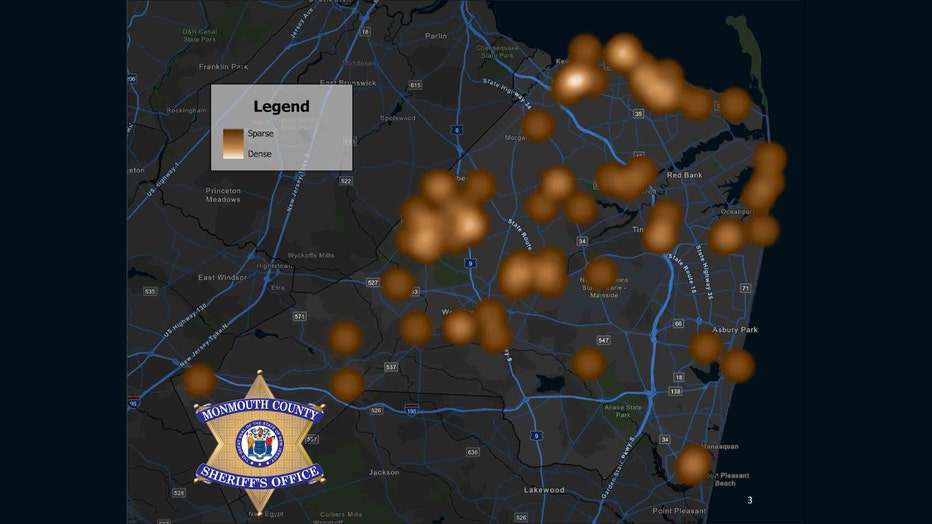Drone sightings: No national security or public safety risk, US government agencies say

Breaking down the importance of drone detection
Suspicious drone sightings in states across the Northeast in recent weeks may be coming from inside the United States, according to a military expert. Civilians and lawmakers have reported drone sightings in New Jersey, Pennsylvania, New York, Connecticut, Ohio and other states, with local and federal law enforcement offering little information about the aerial activity, most of which has been spotted at night. Some of the drones are as large as 6 feet in diameter, according to New Jersey state Rep. Dawn Fantasia, who was briefed on the matter last week. Sky Safe CEO Grant Jordan joined LiveNOW from FOX to discuss.
WASHINGTON - U.S. government agencies issued a joint statement amid the ongoing investigation into the reported drones sightings over parts of the East Coast in recent weeks.
The statement, released on Monday by the Department of Homeland Security, the FBI, the Federal Aviation Administration and the Department of Defense, said that while the agencies "recognize the concern," there is no evidence that the drones are "anomalous" nor do they present a "national security or public safety risk over the civilian airspace in New Jersey or other states in the northeast."
"Having closely examined the technical data and tips from concerned citizens, we assess that the sightings to date include a combination of lawful commercial drones, hobbyist drones, and law enforcement drones, as well as manned fixed-wing aircraft, helicopters, and stars mistakenly reported as drones," the joint statement said.
It added that the U.S. government agencies "recognize the concern among many communities."
Dozens of mysterious nighttime flights first spotted in New Jersey last month and now being seen across the U.S. have raised concerns among residents and officials. The FBI has received more than 5,000 reports of alleged drone sightings in "the last few weeks," generating approximately 100 leads, according to the statement.
It noted how there are more than 1 million drones lawfully registered with the FAA in the United States, and there are thousands of commercial, hobbyist and law enforcement drones lawfully in the sky on any given day.
A bill before the U.S. Senate would enhance some federal agencies’ authority and give new abilities to local and state agencies to track drones. It would also start a pilot program allowing states and local authorities to disrupt, disable or seize a drone without prior consent of the operator.
"We continue to support state and local authorities with advanced detection technology and support of law enforcement," the statement continued. "We urge Congress to enact counter-UAS legislation when it reconvenes that would extend and expand existing counter-drone authorities to identify and mitigate any threat that may emerge."

A map indicating recent drone sightings in Monmouth County, New Jersey, which is home to Naval Weapons Station Earle. (Courtesy: Monmouth County Sheriffs Office)
Part of the worry has stemmed from the flying objects initially being spotted near the Picatinny Arsenal, a U.S. military research and manufacturing facility, and over President-elect Donald Trump’s golf course in Bedminster.
The joint statement noted how there have additionally been "a limited number of visual sightings of drones over military facilities in New Jersey and elsewhere, including within restricted air space." It said that such sightings near or over DoD facities "are not new."
"DoD takes unauthorized access over its airspace seriously and coordinates closely with federal, state, and local law enforcement authorities, as appropriate," the statement said. "Local commanders are actively engaged to ensure there are appropriate detection and mitigation measures in place."
How to tell the difference between drones vs. planes
Experts who study unmanned aircraft systems — better known as drones — say it can be tough to tell from miles away, but there are clues.
A light in the sky at night can easily be misinterpreted, according to John Slaughter, director of the Unmanned Aircraft Systems Research and Operations Center at the University of Maryland.
"You can’t just walk outside and say, ‘Oh, that’s not a drone,’ or ‘That is one.’ All you can really factually say is, ‘I saw a light in the sky,’" Slaughter told the Associated Press.
Planes and helicopters all have flashing lights and typically at least one red anti-collision light, often two. They also sport navigation lights, which are steady, red and green colored lights like the ones found on boats. Many will also have flashing white strobe lights at their wingtips, and they will have bright landing lights.
Drones flying at night are only required to have one bright, anti-collision light that's visible 3 miles away. But drone owners can add other lights, so some have more than one. Drones are smaller, so when they have multiple lights they are close together, but at night it's often not possible to figure out precisely how far away they are.
Drones also tend to be quieter and make a higher-pitched buzzing noise than that generated by the jet engines or propellers that drive planes and helicopters. But bigger drones can be louder, and the sound may be difficult to discern from a distance.
Drones heavier than about a half-pound may have an identifying number displayed on the outside.
Meanwhile, planes and even helicopters tend to move smoothly in the air, but multicopter drones can stop on a dime, pivot 90 degrees and reverse course, Slaughter said.
"That kind of motion can give you a clue that you’re looking at a drone, not an aircraft," he said.
The vast majority of drones will be operating below 400 feet, following federal regulations.
The Source: This story was written based on a joint statement published by the Department of Homeland Security, the FBI, the Federal Aviation Administration and the Department of Defense on Dec. 16, 2024. It was reported from Cincinnati, and the Associated Press and FOX News contributed.

